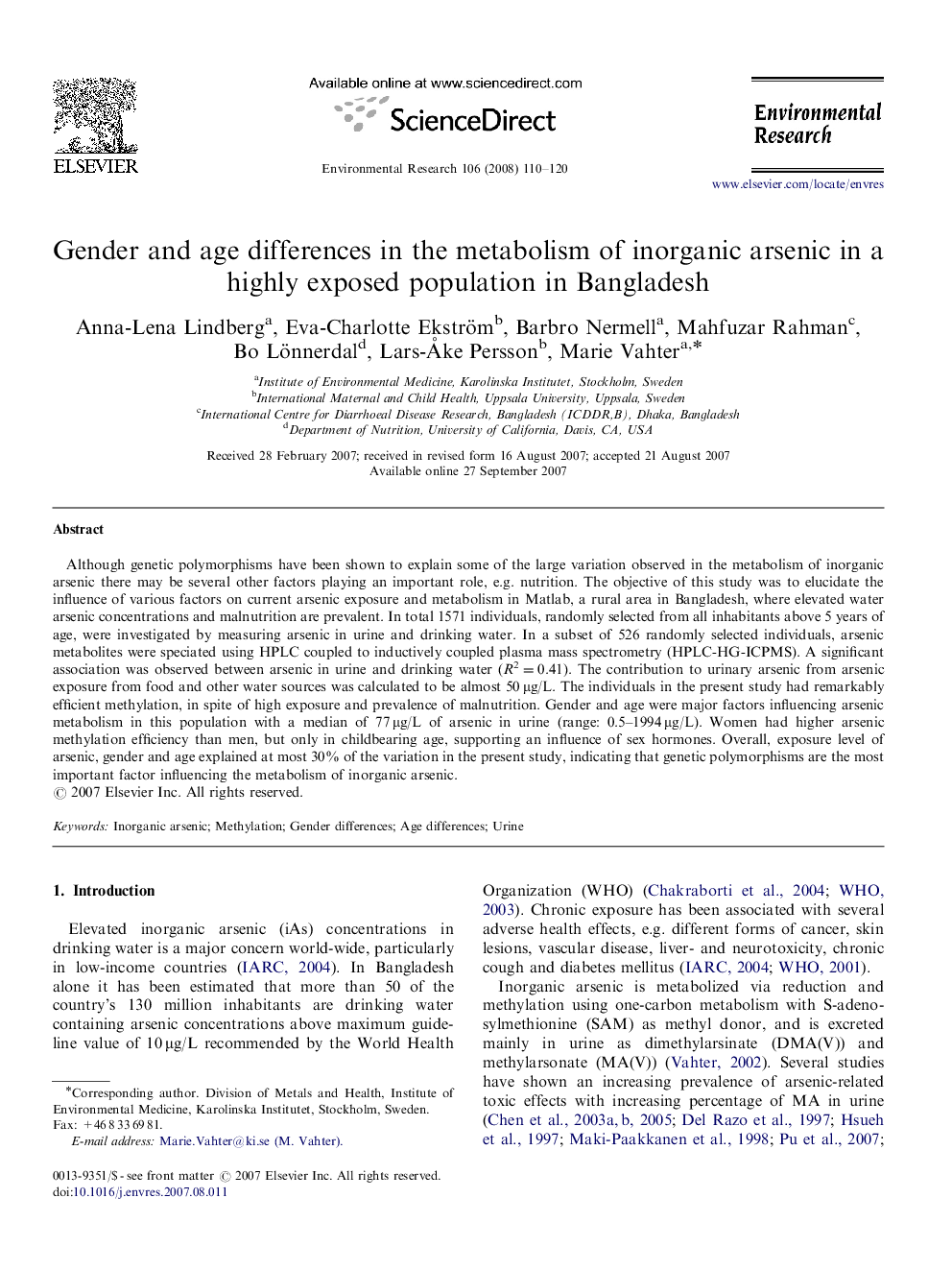| Article ID | Journal | Published Year | Pages | File Type |
|---|---|---|---|---|
| 4470874 | Environmental Research | 2008 | 11 Pages |
Although genetic polymorphisms have been shown to explain some of the large variation observed in the metabolism of inorganic arsenic there may be several other factors playing an important role, e.g. nutrition. The objective of this study was to elucidate the influence of various factors on current arsenic exposure and metabolism in Matlab, a rural area in Bangladesh, where elevated water arsenic concentrations and malnutrition are prevalent. In total 1571 individuals, randomly selected from all inhabitants above 5 years of age, were investigated by measuring arsenic in urine and drinking water. In a subset of 526 randomly selected individuals, arsenic metabolites were speciated using HPLC coupled to inductively coupled plasma mass spectrometry (HPLC-HG-ICPMS). A significant association was observed between arsenic in urine and drinking water (R2=0.41). The contribution to urinary arsenic from arsenic exposure from food and other water sources was calculated to be almost 50 μg/L. The individuals in the present study had remarkably efficient methylation, in spite of high exposure and prevalence of malnutrition. Gender and age were major factors influencing arsenic metabolism in this population with a median of 77 μg/L of arsenic in urine (range: 0.5–1994 μg/L). Women had higher arsenic methylation efficiency than men, but only in childbearing age, supporting an influence of sex hormones. Overall, exposure level of arsenic, gender and age explained at most 30% of the variation in the present study, indicating that genetic polymorphisms are the most important factor influencing the metabolism of inorganic arsenic.
